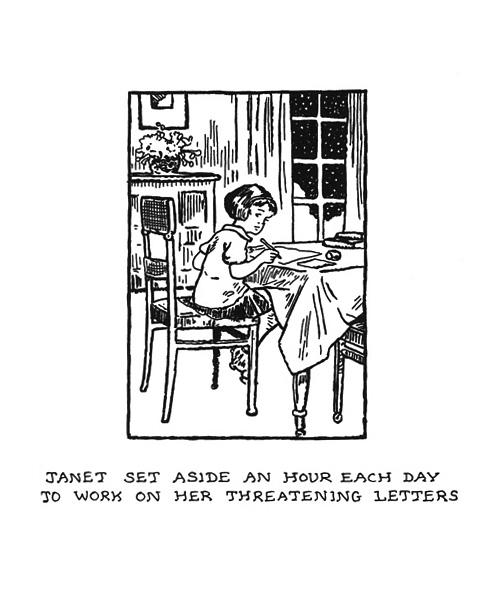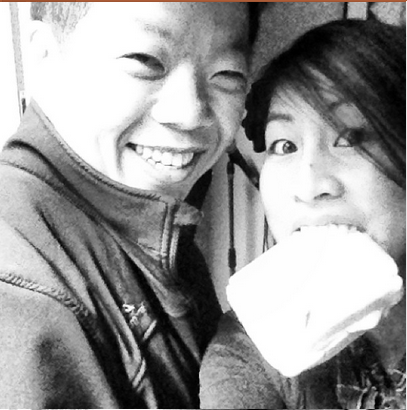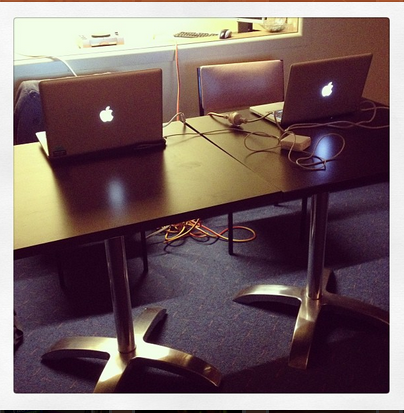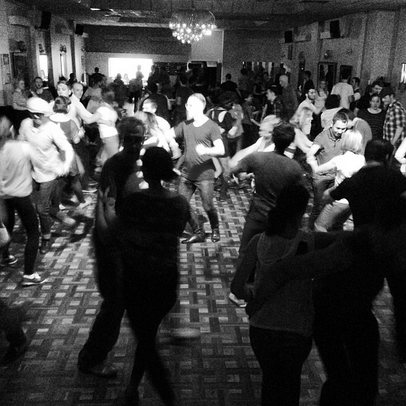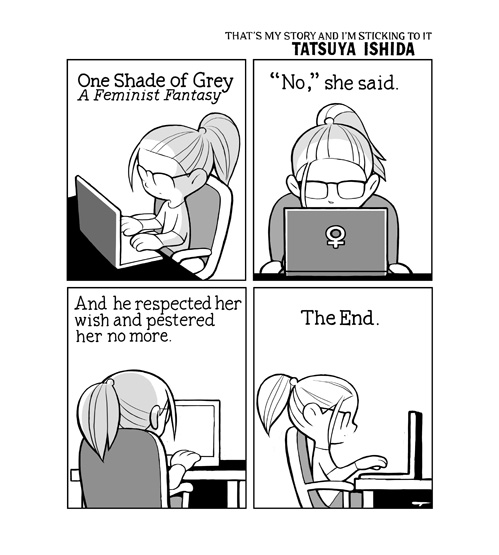I promised myself I wouldn’t wade in on this stuff, because it makes me far too angry. But I’ve been going through some documents, and I’ve come across a bunch of drafts for blogposts about gender and dance. inorite. Do I have any other blog posts? Yes, I do. But not too many.
Here’s one I wrote in response to a flare-up online about the problem I had with a particular piece someone wrote ages ago about follows, but which used gender specific language.
To be honest, it feels very first year undergraduate arts degree to raise the issue of gender specific language. It’s such a simple, fundamental part of cultural studies, media studies, literary studies any sort of textual analysis, to raise the issue of gender specific language. I mean, we’re talking second wave feminism here – the sort of issue that was important in the 1960s.
Why is language important to feminism? Or to any sort of critical engagement with the way ideology works? This is old school. When we do semiotics with first years, we explain how language choices and use reveal ideology. Or, in other words, the words we choose to use reveal the way we think about the world. I really like Roland Barthes for the way he explores the relationship between language choices, ideology and social power.
So, to use a very relevant example, the mainstream press and conservative political figures in Australia referred to our Prime Minister, Julia Gillard, as ‘Julia’, rather than as ‘Prime Minister’. But now that she has been replaced by a male prime minister, he is being referred to as ‘Prime Minister’. It seems like a very small thing. But it’s quite important. Yes, it is disrespectful – of the woman and of the office (I cannot imagine an American television reporter calling his president ‘Obama’ in a formal, live-to-air interview) – but it also works to reveal the speaker’s perception of women as less important or powerful than men. And it also works to convince the listener that this is the correct way to address a woman prime minister.
“So what?”, you say. It’s just one example, one word. But this is how patriarchy works. How hegemony works. There’s a whole, massive, huge body of work discussing the role of language in society. I don’t have time to go into it here. But take my word for it: this is a well-accepted and understood analysis of language and society. You can begin with some reading about cultural hegemony, but, really, you’ll have to read up on your own.
Let me explain how I use it here (and how it is commonly used by other socialist feminists):
Yes, it’s just one example. But our lives are filled with millions and billions of these everyday examples. My prime minister – leader of my country – is referred to by her first name rather than her title. When I go to the bank, I’m referred to as ‘Miss’, even though my title – written right there on the bank account details – is ‘Dr’. A middle aged man that I don’t know might call me ‘love’ rather than by my name, in a professional setting. A man refers to me as ‘that girl’ instead of by my name, when addressing me in a public setting. There are sixty million billion examples of this, including http://saidtoladyjournos.tumblr.com/. This is just everyday sexism, friends. It’s terribly ordinary.
What is important here, is not the individual instances of language use, but the relationships between these many instances, the patterns they create, and the consistencies in these patterns. If I never hear a man refer to me as ‘Dr’ in a professional setting, it undermines my professional and academic achievements. It implies that I am a) not worthy of that title, b) I don’t actually own that title, and c) that title might not actually mean anything, when it’s attached to a woman. If I am then also seeing and hearing other women, even the most powerful woman in my country, belittled in the same way, the message is reinforced: women are not owed public respect for their achievements; women are not capable of demanding our respect.
So how does this work in relation to swing dance?
Simply, let’s assume that teachers never use female pronouns when they talk about leading. They only say ‘he’ or ‘guys’ or ‘doods’ or ‘men’ or ‘gentlemen’ or ‘boys’ or whatevs. They never ever say ‘she’ or ‘her’ or even ‘they’. If I’m in that class, I feel as though I am slowly erased. I just don’t exist. I’m not there in that class. The teachers can be looking right at me, me with my boobs and my hair and all the other fairly traditional markers that tell you I’m ‘female’. They can be looking right at me and say “Ok, gentlemen, let’s lead our follows into the swingout,” and I am just not there for them. Either they don’t see me, or they have some weird sort of dysphasia where they can’t differentiate between women and men. I mean, it’s kind of interesting to think of myself as some sort of under-cover spy for the Sisterhood, slipping through defences to plant big fat fucking feminist BOMBS. But not that interesting. I’m like most other students in a dance class – I just want my teachers to acknowledge me, to tell me I’m doing ok. To see me.
Once or twice I can handle it. It’s no big deal. But it doesn’t happen just once or twice. It happens 99.9% of the time. And keep in mind it’s not just the teachers who do this. Other students in class say “Are you being the man”? “Are you doing the boy’s role?” It was not until this year, when I moved into the highest level classes at workshop weekends that I experienced a single weekend where no one said this sort of thing to me in class. I have never, ever, in fifteen years of dancing, been at a weekend where no one commented on my gender, and no one referred to leads as male. NEVER.
Let’s just pause here: most of this insistence on traditional gender roles happens in lower level classes. When we’re at our most vulnerable, and we’re least sure of who we are as dancers. I think that many of us sort of assume that women leading or men following is ok or acceptable in ‘advanced dancers’, because OMGHARD. But it seems far more radical for brand new dancers to do anything other than BE NORMAL.
So, sure, your saying ‘guys’ when addressing your leads in class is just one time. One small thing. It’s just that little thing. It’s nowhere near as important or interesting as that particular rhythm variation. But mate: you are not the only person in the world putting that little word into the discourse. Yes, it is just a straw. But it’s one of a million billion straws, each slowly loaded up onto that camel’s back.
It’s nothing, right? It’s tiny. No one’s being mean to me. No one’s saying I can’t lead, or that I don’t deserve to lead. I’ve only ever come across one or two teachers who’ve openly said that they won’t use gender-specific language. But I can count on one hand the number of teachers who’ve openly, explicitly encouraged me as a woman lead. Those moments shine in my memory. I take them out and polish them. They’re so important to me. Once, a female teacher whispered to me in class, “Don’t you ever give up leading.” It was the most important thing anyone has ever said to me about dancing. When I’m just so fucking tired of it, I take out that memory and I hold it in my hand for a minute. I don’t have to be the best. I just have to keep going.
[RAGE EDIT—God fucking damn it. What the actual FUCK. This is fucking crazy. CRAZY. Dancing should be fun – not a battle! WHY can’t we just stop being arseholes, and START being grownups about this? Use gender-neutral language. Don’t be a dickwad.— /]
So I literally do not exist in some classes. The woman lead is not here. We are invisible. What does this do? It tells students that women leads aren’t ‘real’ leads. That we aren’t as important as male leads. In my experience, it’s resulted in people saying to my face that I can’t teach as well as a man, because I am a woman teaching as a lead. Many people have said to me that people won’t want to learn from a female lead, or from two women leading together. So many people have told me that it will be/is difficult.
You know what? It’s not. It’s the least difficult part of my job as a teacher. In fact, I rarely stop to think ‘oh, does my vagina impede my ability to scat?’ I can say, categorically, that being a woman does not make me a rubbish lead teacher. I’ve got plenty of other things that make me a dodgy teacher :D Other people’s ideas about women leads as teachers can make them shitty students, but that’s not my problem.
And I think many of us can say that women leads do exist. We’re out there, every night, across the world, kicking arse and taking names. Leading. We’re good at it, we’re great at it, we’re the best at it, but we’re also shit at it, ordinary at it, just plain capable. We’re just as diverse a group as male leads.
Now, ask yourself: how often do you see men follow? It should frighten you, worry you that male follows are so very rare. This is the real problem: patriarchy screws over men and women. It’s not just a matter for women. It’s not just a women’s issue. It’s an issue for all of us to be concerned about.
But all that is really just an introduction to a piece I wrote earlier. Let’s get into it.
Why is gendered language in a swing dance context important?
When we generalise, and say ‘most follows are women, therefore it’s ok that we always refer to follows as ‘she’ or ‘her’ or female’, we are making some mistakes.
1. What evidence do we have to support the statement that ‘most follows are women’?
Why can’t we just assume that women are as likely to lead as men, and men as likely to follow as women? If we just make this assumption, then maybe we’ll find this becomes a self-fulfilling prophesy.
One of the most important moments in my dancing life was at Herrang, in a class with Peter Loggins and Sugar Sullivan. We had no women leading in the class. Sugar was explaining something, and said something like “And when we do this, men, you have to… oh no. Wait. Girls and guys lead nowadays, and that’s alright. So I’m going to say ‘leaders’.”
My heart LEAPT. Here was a old timer saying, without provocation, that not only was it ok for me to lead, but that that was ‘ok’, and that it was important for her to recognise that. By the end of our next class, half a dozen women were leading. Like GUNS. Say it, and you make it so.
2. When we say ‘most follows are women’, the more disturbing correlative point is that we are also saying – implicitly – that most women are follows.
Or, as it plays out in a discursive sense ‘all women are follows’. This is highly problematic. I have never seen a scene where allthe women dancers only follow. I know virtually no female teachers at an international level who can’t lead.
So by declaring ‘most follows are women’, with the correlative statement ‘all women are follows’, we make the female leads disappear. More importantly (because a lot of women choose not to identify as ‘leads’), we make women leading disappear. We are saying that ‘women do not lead’ (because they are following). The following point would be that ‘women can’t lead’ because #vagina. This is just weird. We can’t make that argument, that the biological nature of ‘being a woman’ makes us unfit to lead. Sure, my (enormous) bosom might make some moves challenging, but it doesn’t actually make it impossible for me to lead. And I’m not quite sure how having a vagina would impede my movement. If anything, surely internal genitalia are an advantage in lindy hop.
….that’s all just crazy talk. Let’s stop there.
So, can we argue that nurture has resulted in women being ‘unfit’ for leading? Hm. Considering how diverse we are, I’m not sure you can make that argument, not across cultures, and not even within a single city. But let’s go crazy. Let’s assume so. Nurture is, by definition, mutable. It can be changed. If this is the case, then perhaps in creating dance classes and scenes where women feel comfortable leading, and men feel comfortable with women leads, we are doing something profoundly radical. We are changing social relations. We are undoing ‘nurture’, or the effects of cultural conditioning.
That’s exciting. It’s a big call, though.
Is it too much to ask of lindy hop? People have spoken about the Savoy ballroom as overcoming segregation, with white folk dancing with black folk. That’s a lot to ask of lindy hop, that it overcome legislated, ingrained racism. But lindy hop did it. Surely we can ask a little more of what is, at heart, a profoundly transgressive dance. I have discussed this before, and in fact, I am exploring this idea every day, with everything I do. In the context of patriarchy, every time I step onto the dance floor as a woman, every time I DJ, every time I manage an event, every time I express my opinion, I am committing an act of radical feminism. I am undoing patriarchy. But mostly it just feels like dancing. Normal.
3. When we spend this much time and effort defining women as follows and follows as women, we make following and women the ‘other’, or the problematic role/gender.
The feminine becomes one we have to spend a lot of time discussing. Why don’t we feel the impetus to define and redefine the masculine this way? It is because we normalise leading as masculine. And there aren’t enough people agitating, and asking ‘why aren’t men following?’ What, then, we should ask ourselves, are the benefits to maintaining patriarchy? Why aren’t people shouting about it? Who benefits from the status quo?
This is important, because leading and following do not occur in a social and cultural vacuum. How do these roles – leading and following – and their gendering correlate with broader social roles? How is leading masculinised and following feminised in our culture?
I could go on and on and on about this. How do boringly heteronormative ideas of the lead/follow male/female relationship permeate and inform our conception of lindy hop?
Let me throw this at you:
– passive/receptive/responsive/object (the ‘heavy follow’, the ‘light follow’ – objects to be moved)
– decision-making/active/reactive/subject (the ‘strong’ lead, the one who ‘moves’ the follow – subjects moving objects)
If you’re a dancer with even an intermediate knowledge of dance, you know it’s simply not that simple. This is a very amateurish, beginnerish understanding of leading and following. We understand that follows are actively engaged in the partnership, and that any decent lead is as responsive as a follow, reacting and responding to what they feel happening in the partnership and to the floor around them. I’ve done some very close textual analysis of this before in the post ‘Lindy hop followers bring themselves to the dance, so I won’t go into it again.
So there are two jobs to be done here.
1) Undo that boring gendered dichotomy idea of leading and following, by redefining following as active, and leading as responsive.
Most advanced dancers are all over these ideas. In fact, one the most interesting and challenging ideas getting about in higher level classes, conversations and choreography in the lindy hop world today, is how a lead might actually make their leading work to accomodate and encourage active follows in complex ways. It’s as though most people have just gone ‘of course! durh!’ to the suggestion that active follows are a great idea. They’ve just moved straight on to the next challenge: leaders are asking themselves ‘how do I encourage and facilitate active following?’
It’s so exciting. It’s like they’re saying ‘Feminism will make me a better lead. Now how can I play a role in feminism: what can I do?!’ And they’re getting off their arses and figuring it out themselves.
2) redefine the language we use to describe these roles.
Why is this important? Isn’t the important part just to redefine our thinking about these roles? This is where my background as a discourse analysis scholar comes into play. I believe that language is important.
Any dance teacher worth their salt knows that what they say in class has a profound effect on their students’ learning. Talk too much and the students lose interest. Talk about arms, and the students focus on arms. Scat and the rhythm becomes clear. Use only numbers and the students’ understanding of rhythm is limited.
Language matters to dancers.
It’s really not difficult at all to shift from using gendered pronouns when talking about leading and following. Or is it? In my own class, my teaching partner and I found it harder than we expected. There was a period of a few months where we struggled. This suggests that the way we think about gender and dance roles is related to language, and that these association are quite firmly rooted in our understanding of dance.
But once we did it, we found that using this language really isn’t difficult. It becomes normal.
I mean, fuck. We transcribe complex jazz steps from blurry old black and white films, break them down, learn how to do them, then teach them to students. Learning to say ‘lead’ instead of ‘him’ is a fucking cake walk in comparison.

